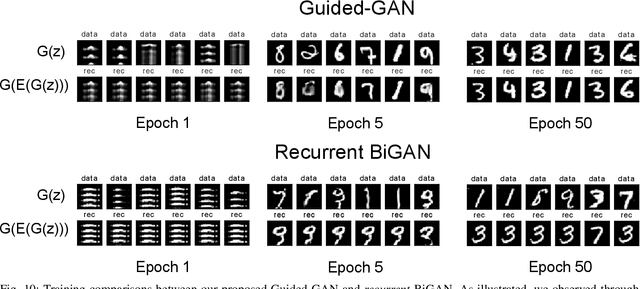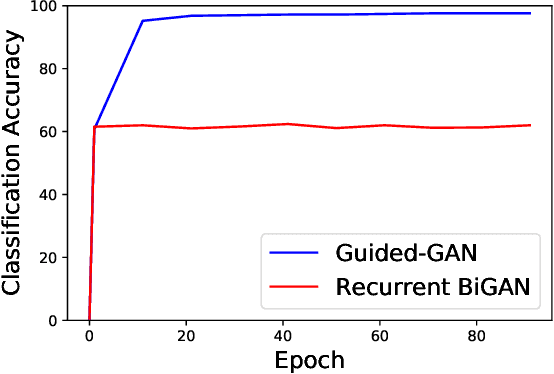Guided-GAN: Adversarial Representation Learning for Activity Recognition with Wearables
Paper and Code
Oct 12, 2021



Human activity recognition (HAR) is an important research field in ubiquitous computing where the acquisition of large-scale labeled sensor data is tedious, labor-intensive and time consuming. State-of-the-art unsupervised remedies investigated to alleviate the burdens of data annotations in HAR mainly explore training autoencoder frameworks. In this paper: we explore generative adversarial network (GAN) paradigms to learn unsupervised feature representations from wearable sensor data; and design a new GAN framework-Geometrically-Guided GAN or Guided-GAN-for the task. To demonstrate the effectiveness of our formulation, we evaluate the features learned by Guided-GAN in an unsupervised manner on three downstream classification benchmarks. Our results demonstrate Guided-GAN to outperform existing unsupervised approaches whilst closely approaching the performance with fully supervised learned representations. The proposed approach paves the way to bridge the gap between unsupervised and supervised human activity recognition whilst helping to reduce the cost of human data annotation tasks.
 Add to Chrome
Add to Chrome Add to Firefox
Add to Firefox Add to Edge
Add to Edge